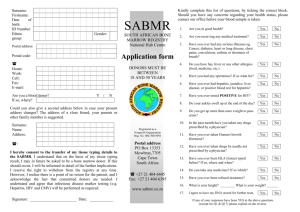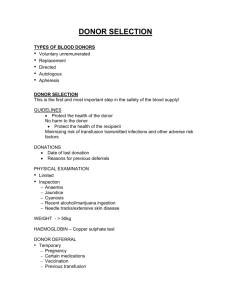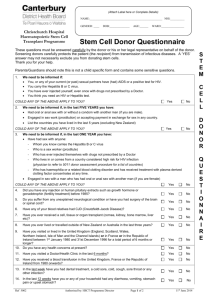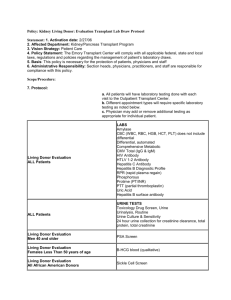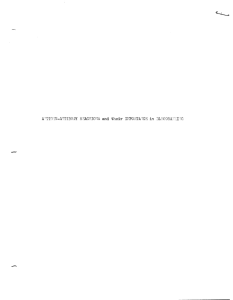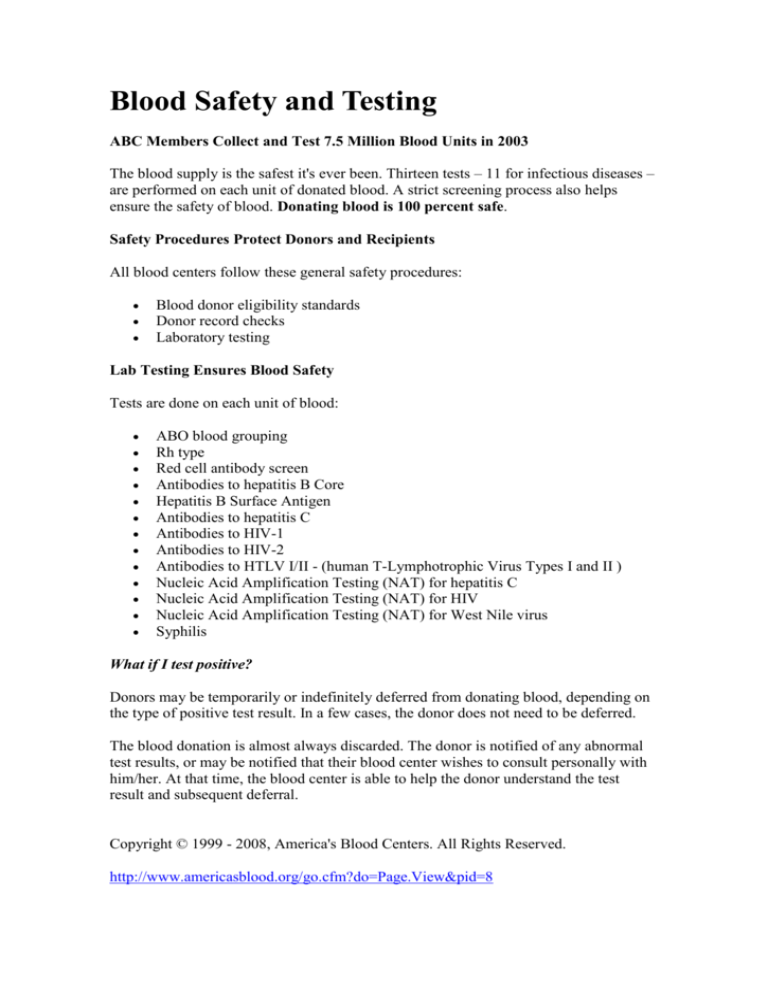
Blood Safety and Testing
ABC Members Collect and Test 7.5 Million Blood Units in 2003
The blood supply is the safest it's ever been. Thirteen tests – 11 for infectious diseases –
are performed on each unit of donated blood. A strict screening process also helps
ensure the safety of blood. Donating blood is 100 percent safe.
Safety Procedures Protect Donors and Recipients
All blood centers follow these general safety procedures:
Blood donor eligibility standards
Donor record checks
Laboratory testing
Lab Testing Ensures Blood Safety
Tests are done on each unit of blood:
ABO blood grouping
Rh type
Red cell antibody screen
Antibodies to hepatitis B Core
Hepatitis B Surface Antigen
Antibodies to hepatitis C
Antibodies to HIV-1
Antibodies to HIV-2
Antibodies to HTLV I/II - (human T-Lymphotrophic Virus Types I and II )
Nucleic Acid Amplification Testing (NAT) for hepatitis C
Nucleic Acid Amplification Testing (NAT) for HIV
Nucleic Acid Amplification Testing (NAT) for West Nile virus
Syphilis
What if I test positive?
Donors may be temporarily or indefinitely deferred from donating blood, depending on
the type of positive test result. In a few cases, the donor does not need to be deferred.
The blood donation is almost always discarded. The donor is notified of any abnormal
test results, or may be notified that their blood center wishes to consult personally with
him/her. At that time, the blood center is able to help the donor understand the test
result and subsequent deferral.
Copyright © 1999 - 2008, America's Blood Centers. All Rights Reserved.
http://www.americasblood.org/go.cfm?do=Page.View&pid=8

